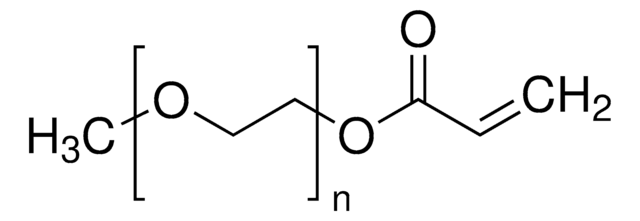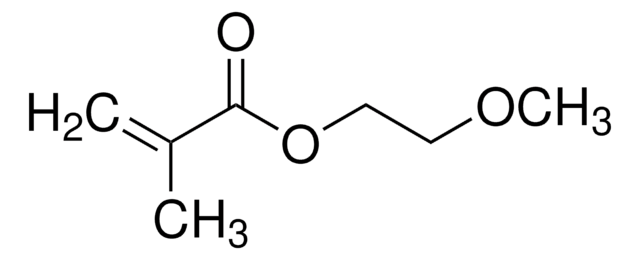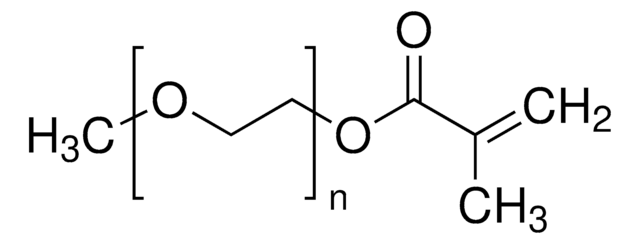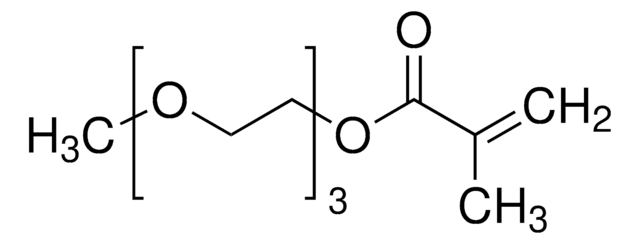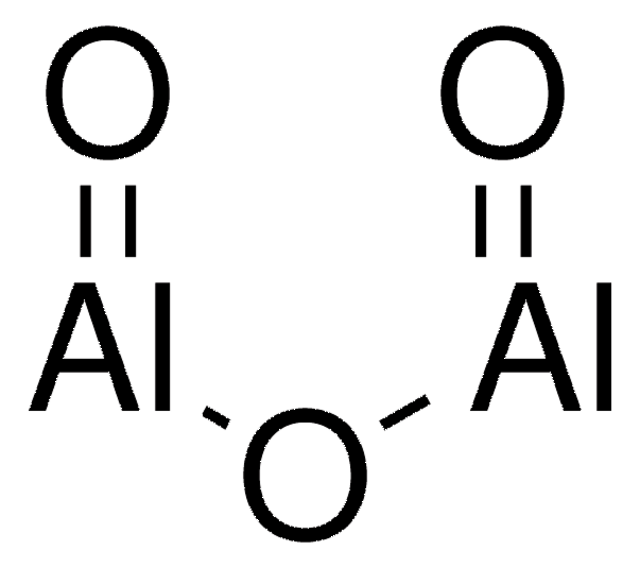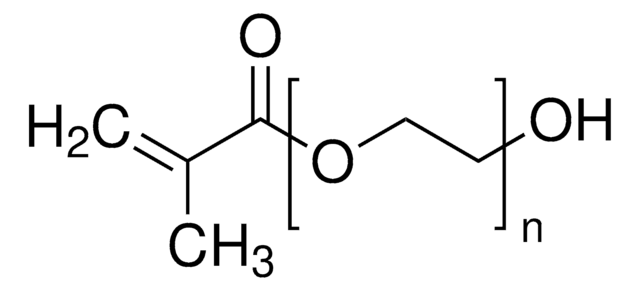Wichtige Dokumente
408913
Ethylenglycolmethyletheracrylat
contains 50-100 ppm MEHQ as inhibitor, 98%
Synonym(e):
2-Methoxyethylacrylat
About This Item
Empfohlene Produkte
Qualitätsniveau
Assay
98%
Form
liquid
Enthält
50-100 ppm MEHQ as inhibitor
Brechungsindex
n20/D 1.427 (lit.)
bp
56 °C/12 mmHg (lit.)
Dichte
1.012 g/mL at 25 °C (lit.)
SMILES String
COCCOC(=O)C=C
InChI
1S/C6H10O3/c1-3-6(7)9-5-4-8-2/h3H,1,4-5H2,2H3
InChIKey
HFCUBKYHMMPGBY-UHFFFAOYSA-N
Verwandte Kategorien
Allgemeine Beschreibung
Signalwort
Danger
Gefahreneinstufungen
Acute Tox. 3 Dermal - Acute Tox. 3 Inhalation - Acute Tox. 4 Oral - Aquatic Chronic 3 - Eye Dam. 1 - Flam. Liq. 3 - Muta. 2 - Repr. 1B - Skin Corr. 1C - Skin Sens. 1 - STOT RE 2
Zusätzliche Gefahrenhinweise
Lagerklassenschlüssel
3 - Flammable liquids
WGK
WGK 3
Flammpunkt (°F)
140.0 °F
Flammpunkt (°C)
60 °C
Persönliche Schutzausrüstung
Eyeshields, Faceshields, Gloves, type ABEK (EN14387) respirator filter
Hier finden Sie alle aktuellen Versionen:
Besitzen Sie dieses Produkt bereits?
In der Dokumentenbibliothek finden Sie die Dokumentation zu den Produkten, die Sie kürzlich erworben haben.
Kunden haben sich ebenfalls angesehen
Unser Team von Wissenschaftlern verfügt über Erfahrung in allen Forschungsbereichen einschließlich Life Science, Materialwissenschaften, chemischer Synthese, Chromatographie, Analytik und vielen mehr..
Setzen Sie sich mit dem technischen Dienst in Verbindung.